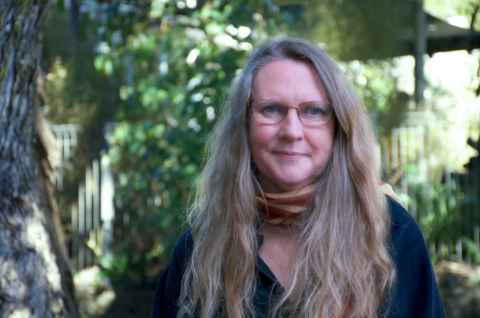‘Children without schools’ – 1942 and today
In February 1942 the military took over schools in Palmerston North and Fielding due to the looming possible threat of invasion of Aotearoa New Zealand by the Japanese.

The military used school facilities and billeted out New Zealand soldiers to local schools and homes.
This coincided with the start of the new academic year, and at the time no one knew that it would result in an educational experiment that would have lasting effects on Aotearoa’s education system.
Dr Frances Kelly, with colleagues Dr Molly Mullen and Associate Professor Kirsten Locke, has recently been awarded Contestable Research Development funding to study this fascinating educational innovation in Palmerston North during the Second World War.
According to Clarence Beeby, the then-Director of Education, often termed the ‘father of the modern education system’, the “emergency gave us the chance to do more than just carry on with the bare school subjects”. (1942)
Initially there was a lot of concern about ‘what to do with the children’? Teachers took a step back from teaching in the traditional form, while the children set up ‘dens’ and huts in people’s garages, where they created their own emergency response style of learning.
They engaged in activities such as art and music, developed and narrated their own radio plays, and added to the local war effort community service by helping with gardening and cooking and other tasks that, due to men of the area being at war, had been left to women to do alone. These activities were carried out by children from 7-8 years of age, up to age 12.
As the short film Children without schools (NFU, 1942) shows, children took to the streets of Palmerston North and Fielding in an Emergency Education Scheme (EES), making the town their classroom, replacing a teacher-led educational experience with self-governance, and undertaking activities that foregrounded engagements with the community and with local sites.
Fast forward 80 years, and New Zealand found schools facing a similar, but different, situation with the Covid-19 pandemic in 2020-2022. Teachers and students once again had to quickly learn how to respond to an emergency education situation and keep on carrying on teaching. Alternative education practices had to be developed in response to unusual emergency teaching conditions.
When Dr Frances Kelly posted Children without schools to an online discussion forum in EDUC116 [1] in 2020, students relished the opportunity to reflect on a local historical example of emergency education as they grappled with their own experiences of education in crisis mode, for which many had no precedent. When designing the project back in February this year, Dr Kelly wrote:
Three years later, life shows little sign of returning to ‘normal’ (whatever that is); as we write this in February 2023 [2],”says Dr Frances Kelly. “We are at home with our children, whose campuses and schools are closed once again as Tāmāki Makaurau and Northland experience extreme weather.
The extreme weather that hit these areas once again produced an emergency education situation, where teachers and students had to quickly respond to the aftermath of tropical Cyclone Gabrielle and extensive flooding throughout the upper North Island. Another unexpected EES.
“As emergency education beckons as a potential new normal, we must consider alternatives to what has become the conventional educational playbook and to default responses to crises”, says the research team. “We must look for educational alternatives suited to the 21st century states of unease and uncertainty.”
One objective of the project is to reflect on opportunities created in this historical emergency scheme, previously unexamined in educational histories in Aotearoa.
Initial archival scoping of the project has revealed dimensions of the EES overlooked to date, particularly material relating to sound and how it was used to enrich children’ s learning, and awareness of its significance and impact on the New Zealand arts curriculum.
“Our awareness of the sonic properties of the EES has been partly brought home through our own experiences during the pandemic: from the shifting nature of sound during the quiet of lockdowns to the introduction of new sounds to the aural vernacular, such as emergency alerts signalling an outbreak,” Dr Kelly says.
“Sounds resonate from the EES archive – from children engaging with broadcast radio in Palmerston North, recordings of Peter and the Wolf and other musical programmes heard in Fielding’s Community Centre, to emergency signals in wartime streets.”
She hopes to research the educational experiment of 1942 “to unearth an experiment in Aotearoa’s educational past that highlighted the interdependence of people and place and raised questions about the role of education in ‘the public’, and now offers thoughtful provocation to educators as we prepare for an unstable post-anthropocentric future.”
Dr Kelly also hopes to be able to connect with people who have memories of that unusual time. The research team are planning to contribute to local histories and to share with and invite the communities of Palmerston North and Fielding into the research.
The research involves several dimensions, from archival research in the archives of the Ministries of Education and Defence, the National Film Unit, and Radio New Zealand archive; to site visits in Palmerston North and Fielding, which will involve collaboration with local educators, historians, artists, and mana whenua; and an audio collection phase. The latter will involve locating, creating and recreating sounds identified in the archive phase (e.g. radio plays, records played and emergency sounding) and location sounds at local parks and community centres and children’s assembly points Palmerston North.
The project aims to bring to attention the significance of reflecting on the EES in 1942 to current educational times in an unforeseen and unexpected way.
The research team commenced their visits to Palmerston North and Fielding in 2023 and the results of the project will be published 2024 - 2025.
[1] EDUC116 - Introduction to Educational Thought
[2] University of Auckland, Faculty of Education and Social Work – Contestable Research Development Fund Application Form (2023)